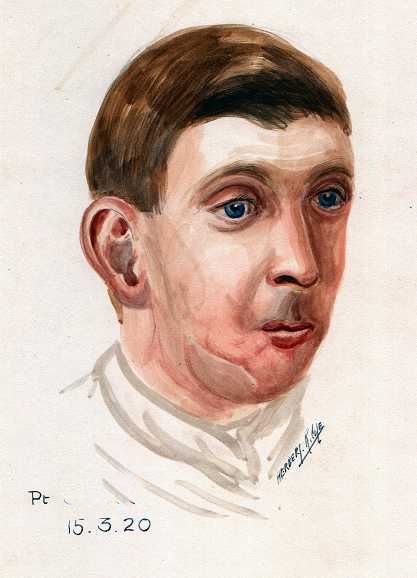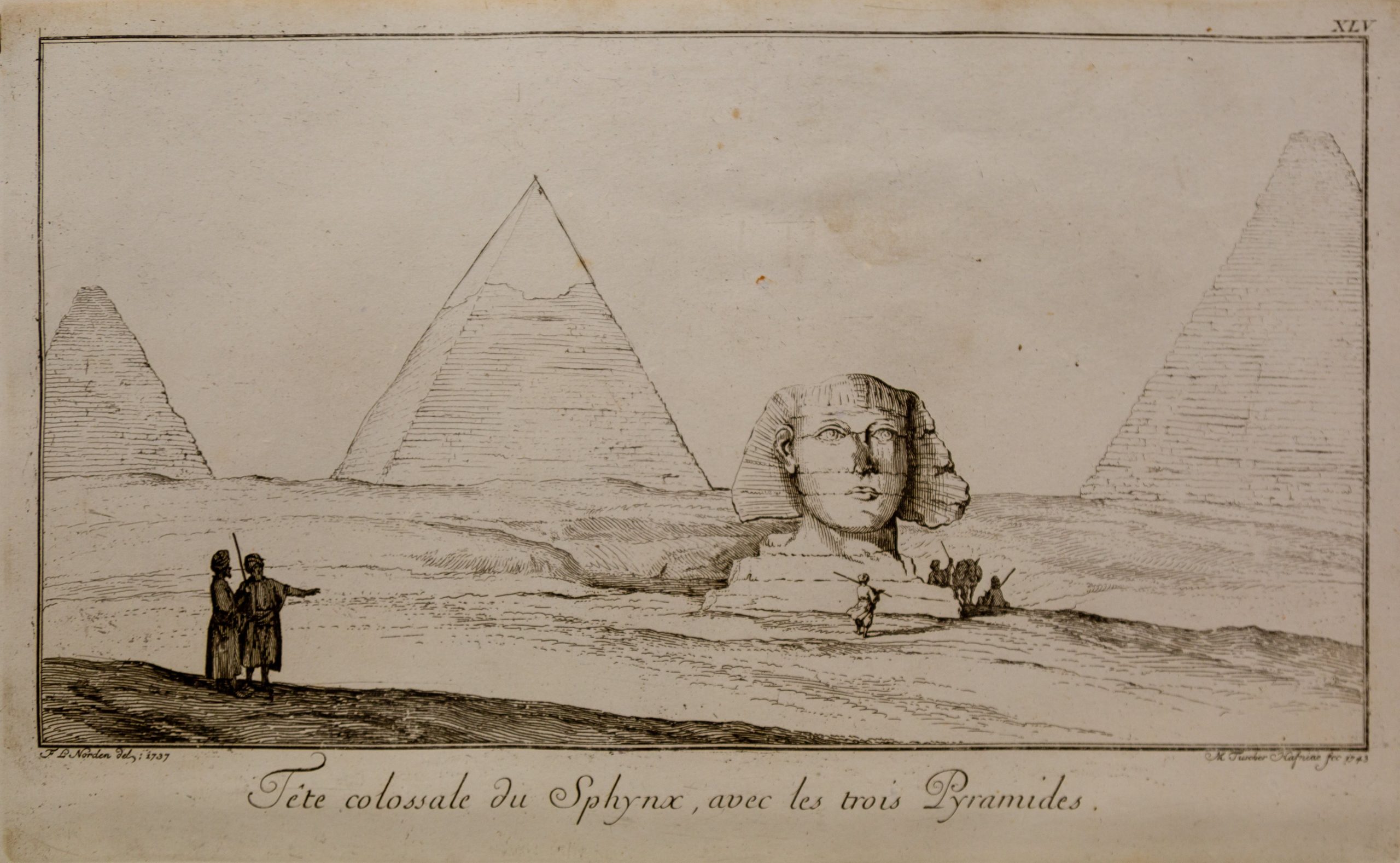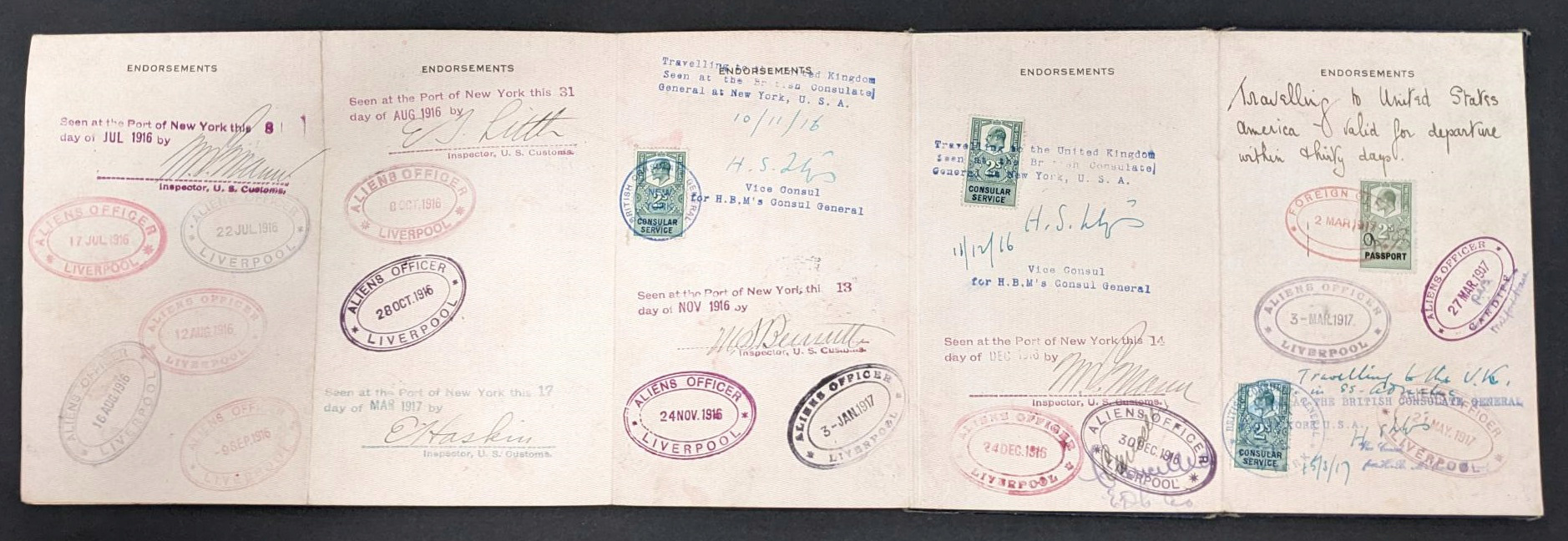Remembrance and inclusion with the Royal College of Surgeons England
November was a month to highlight themes of remembrance and inclusion across Archive collections, so the Royal College of Surgeons England (RCS England) have offered an insight into Sir Harold Gillies’ work and how he shaped and helped soldiers’ lives.
When Sam Mendes collected the Golden Globe for Best Director for the film 1917, he dedicated the award to his grandfather, Alfred. ‘He signed up for the First World War aged 17. I hope he’s looking down on us. And I fervently hope it never, ever happens again.’
Sir Harold Gillies’ WW1 case file
Sir Harold Gillies’ First World War case files elicit the same response as Sam Mendes’. The collection of clinical notes, photographs and watercolours illustrate a moving insight into the experiences of over 2,500 soldiers who underwent facial reconstruction surgery after they were wounded on the battlefield. Looking at the case files brings home the reality of warfare and inspires further questions on how the soldiers must have felt.
Diagram showing the planned use of a skin graft flap.

Harold Gillies’ Patient Case File (anonymised)
MS0513/1/1/02 the Royal College of Surgeons of England (RCS England)
The patient is a 35 year old Private in the 24th Australian Infantry Battalion who suffered a gunshot wound to the face. He was admitted to Queen Mary’s on 6 December 1917 and remained in hospital for a year, during which time he had eight operations.
The father of modern plastic surgery
Gillies (1882–1960) is widely considered to be the father of modern plastic surgery. Born in New Zealand, Gillies trained in England and joined the Army Medical Corps at the outbreak of the First World War. Posted to France in 1915, he witnessed the rise in horrific facial wounds caused by the combination of heavy artillery and trench warfare, with soldiers peering over the parapets. This led Gillies to set up a multidisciplinary team of surgeons, nurses and artists at Queen Mary’s Hospital, Sidcup. The team attempted ground-breaking procedures, using grafted flaps of skin and transplanted bone ribs.
Gillies focused on both functionality and aesthetics. Mindful of the social stigma of facial disfigurement at the time, he tried to make patients similar to how they looked before their injury. While the photographs in the collection are a graphic reminder of the horror of war, it also shows that war has been catalyst for medical advances.
Gillies used the black and white photographs in the files to record his patients’ injuries and plan their repair. The photographs show the initial injury, most often to the jaw or nose, and the outcome of surgeries. Gillies also called upon artists to paint colour portraits of the wounded soldiers and take casts of their faces. Among them was Henry Tonks, (1862–1937), who trained as a surgeon before he became a professional painter. Tonks’s pastel portraits are in the College’s Hunterian Museum.

MS0513/2/2/76 the Royal College of Surgeons of England (RCS England)
Researchers’ work on the collection
The Gillies files are one our most used collections, attracting interest from students and academic researchers from all over the world who might be studying medical history, military history, social history or art.
Like the film 1917, this collection commemorates the soldiers of the First World War. The case files have inspired some researchers to trace the lives of the soldiers and tell their individual stories. Notable publications include Faces From The Front by Dr Andrew Bamji. The book explores both the surgical and aesthetic outcomes and the emotional impact of facial reconstruction. Lindsey Fitzharris’ book The Facemaker tells Gillies’ story as well as that of many of the men he operated on.
Further investigation into the psychological impacts, post surgery
The case files record clinical information, and do not reveal how the soldiers felt during or after their operations.
However, researchers have examined these questions further. Bamji contacted the families of the soldiers. One family member revealed that her grandfather never spoke of how he received his injury. Fitzharris consulted diaries kept at the Imperial War Museum to explore how the soldiers re-integrated into society after their procedure. In a diary extract written by the nurse, Catherine Black who worked with Gillies at the Cambridge Military Hospital in Aldershot, one soldier went on to live a life of self-imposed isolation. Although this was the reality for some of the men, Fitzharris states “what Gillies was able to do by rebuilding their faces did allow them to have that sort of second life. They could go back into society. They could be accepted by society, again, that was so prejudiced against these facial differences.”

MS0513/2/2/77 the Royal College of Surgeons of England (RCS England)
A collection’s legacy
We receive many requests from living relatives of the soldiers, who tell us how much it means to see their grandfather, father or uncle’s file, to understand his experience and keep his memory alive. With the family members in mind, we carefully restrict public access to the photographs of the soldiers to ensure that they are only used sensitively, in a medical and historic context. For this reason, we have decided not to include the photographs from the case files in this blog. Before the collection came to RCS England, images were downloaded by third parties and used in a way that de-humanised the soldiers. In one instance, the injured face of a soldier was used to create a ‘zombie character’ in a computer game.
The case files are an important piece of surgical history, and provide a good basis for further research into the social and psychological impact of military surgery. As Archivists, we honour the memory of the soldiers by preserving their stories and ensuring that they are used in a respectful and meaningful way.
Written by Victoria Rea and Ruth Ilott at the Royal College of Surgeons England.
Edited by Isabel Lauterjung, Blog Coordinator for Explore Your Archive campaign.
Further information
- The Royal College of Surgeons of England (rcseng.ac.uk)
- Faces From The Front. Book author Andrew Bamji
- The Facemaker. Book author Lindsey Fitzharris






